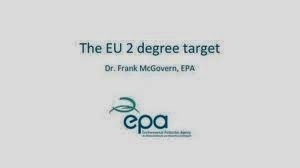Date:
April 15, 2014 - SCIENCE DAILY
Source:
Uni Research
Summary:
A global warming of 2 degrees Celsius relative to pre-industrial climate has been considered as a threshold which society should endeavor to remain below, in order to limit the dangerous effects of anthropogenic climate change.
A global warming of 2 °C relative to pre-industrial climate has been considered as a threshold which society should endeavor to remain below, in order to limit the dangerous effects of anthropogenic climate change.
However, a new study shows that, even at this threshold, substantial and robust changes may be expected across Europe. Most of Europe will warm more than the global average with increases over +3 degrees over Northern Europe in winter and Central-Southern Europe in summer.
Similar increases are also shown for extremes of temperature. Precipitation patterns at +2C global warming show the now familiar wet-north and dry-south patterns and increasing heavy precipitation across much of Europe in both winter and summer.
These conclusions appear in a new study published inEnvironmental Research Letters in March and recently highlighted in Nature. Stefan Sobolowski at Uni Research and the Bjerknes Centre is co-author in the study led by Robert Vautard at the Pierre-Simon Laplace Institute in Gif-sur-Yvette, France.
This research was performed as part of an EU-FP7 project called IMPACT2C, which investigates the potential impacts in Europe and abroad even if society manages to keep globally averaged warming to around 2 degrees celsius. Crossing the +2 degree threshold is essentially a mid-century or earlier event under both the older IPCC scenarios and the new representative concentration pathways (RCPs).
.jpg) Weather and climate is experienced locally The only way it is avoided is under the very aggressive, and increasingly unlikely, RCP2.6 scenario. The patterns of change, with the exception of regional variations, are now well known. What is new in this study is the fact that it can be shown that even at the global threshold of +2C substantial regional to local scale changes occur.
Weather and climate is experienced locally The only way it is avoided is under the very aggressive, and increasingly unlikely, RCP2.6 scenario. The patterns of change, with the exception of regional variations, are now well known. What is new in this study is the fact that it can be shown that even at the global threshold of +2C substantial regional to local scale changes occur.
A global warming of +2C is somewhat abstract concept to many people. We do not experience weather and climate globally, we experience it locally. And this study places these changes in a spatial context that is relevant for the public.
Further, this study shows that these changes not as far away as we might think; a few decades at most.
"To put this in perspective," Dr. Sobolowski says, "this will be about the time that my daughter reaches adulthood."
Story Source:
The above story is based on materials provided by Uni Research. Note: Materials may be edited for content and length.
Journal Reference:
- Robert Vautard, Andreas Gobiet, Stefan Sobolowski, Erik Kjellström, Annemiek Stegehuis, Paul Watkiss, Thomas Mendlik, Oskar Landgren, Grigory Nikulin, Claas Teichmann, Daniela Jacob. The European climate under a 2 °C global warming. Environmental Research Letters, 2014; 9 (3): 034006 DOI:10.1088/1748-9326/9/3/034006
.jpg)
No comments:
Post a Comment